Sartorius Muscle Pain
When you feel pain in the front of the hip joint while they flex and rotate the joint and during walking, it is indicated to be sartorius muscle pain. This pain is produced by many reasons like sartorius muscle strain and tear of the sartorius muscle. This pain is releived with the Help of Pain relieving medicine with physiotherapy treatment.
What is sartorius muscle pain?
This muscle is also known as the tailor’s muscle because this muscle helps to flex joints and rotate the hip joint and flex the knee joint.
If the patient sits with one leg crossed over the other leg, and then the sartorius muscle is working.
This pain happens due to many reasons like strain in the muscle and ear of the muscle.
The patient is also feeling weakness in the leg, this pain is relieved by the RICE principle at home and physiotherapy treatment.
Anatomy of the sartorius muscle
The Sartorius’s muscle is the longest in the human body.
The sartorius muscle is a long muscle that is situated in the front of the thigh.
This muscle originates from the Anterior superior iliac spine (ASIS).
The courses of this muscle are from the hip joint and cross the front of the thigh.
Then this muscle is inserted near the inner portion of the knee joint.
The function of the sartorius muscle is to bend and rotate the hip joint and flex the knee.
The Sartorius’s muscle is innervated by the femoral nerve.
Cause of the sartorius muscle pain
- Overuse of the sartorius’s muscle
- Strain in the sartorius’s muscle
- Tendinitis of Pes anserine
- Paresis and paralysis of the Sartorius’s muscle due to a pinched nerve injury in the lumbar spine.
- An injury of the sartorius muscle generally occurs with a conjunction injury to another thigh muscle such as the psoas and the quadriceps muscle because all the muscles work together and perform the movement.
Symptoms of the sartorius pain
Symptoms of this muscle pain depend on the cause of the pain.
Sartorius tendonitis:
Sartorius muscle tendonitis gives generally results in pain and limited mobility of the muscle.
The patient is feeling pain in the front of the hip joint while bending and rotating the joint during walking.
Physiotherapy helps to decrease the inflammation of the muscle and improve mobility.
Sartorius tear:
When a tear occurs in the sartorius muscle pain and swelling are produced in the muscle.
It involves a significant period of immobility and rests to allow for the muscle to heal. After healing, the physical therapist helps to improve mobility, flexibility of the sartorius muscle.
Pes anserine tendonitis:
In this condition, the patient feels pain in the medial and front parts of the upper shin bone just below the knee joint.
Physiotherapy help decrease pain and inflammation and improve sartorius flexibility or strength.
Weakness due to nerve injury:
Nerve compression in the lower back is due to herniated disc or foraminal spinal stenosis produced by pain and weakness in the front of the thigh by affecting the sartorius muscle.
Treatment includes exercises to reduce nerve compression and correct posture.
Some movements produced problems in this Sartorius’s muscles:
- A twisting fall.
- A sudden twisting of a planted foot.
- Maintain the legs up while sitting and sleeping position
- Keeping a contorted position.
- Some common sporting activities like swimming, skating, soccer, and hockey, are commonly used to force adduction of the hip joint. This is a setup for the trigger points in this muscle.
Diagnosis of Sartorius muscle pain
When the patient suspects any of these problems, please visit the healthcare provider and get an accurate diagnosis so that start the proper treatment of the cause for pain.
The healthcare provider is follow the examination for the diagnosis of pain.
First doctor and physiotherapist take to history and try to cause the pain.
In the observation, the part observes the swelling in the region of pain.
Then do the palpation of the swellings and spasms.
In the examination, the part checks the ROM ( range of motion ) of the hip joint and the strength of the muscle.
Treatment of Sartorius muscle pain
RICE principle :
The first phase of treatment after the muscle pain is the RICE principle.
R-rest: When the patient feels muscle pain do the rest for some days.
I-ice: Used to ice on the site of pain for 15 to 20 minutes, you can also be used an ice pack and frozen peas for pain relief and to reduce the swellings.
C-compression: Applied compression bandage on the site of pain to release the pain and swelling.
E-elevation: Elevated to leg with the help of a pillow to relieve the swellings.
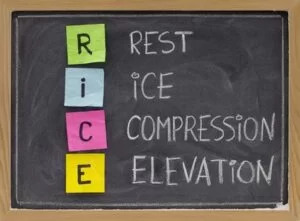
Electrotherapy treatment :
Short wave diathermy ( SWD ), Transcutaneous electro nerve stimulation ( TENS ), Interferential therapy ( IFT ), and Ultrasound ( US ) is included in electrotherapy treatment, which helps for releasing pain and swelling.
US-ultrasound: US-ultrasound therapy is used to remove the tender points and trigger points in the place of tender pain.
SWD-short wave diathermy, IFT, and TENS: SWD-short wave diathermy, IFT, and TENS are used to release the pain and swelling.
This machine is applied for 10-15 minutes to the pain area.
Trigger Point:
A trigger point is always referred to as pain and sensation in another place when they press the point.
On the trigger point applied to pressure on the point and maintain this pressure for no less than 1 minute and no longer than 2 minutes till the feel the tissue softens. Then release this pressure slowly without moving the finger.
Rest and repeat this multiple times every day.
Physiotherapy treatment for Sartorius muscle pain
The physiotherapy treatment includes stretching, strengthening exercises, and yoga which are used to reduce the pain in muscles.
Stretching Exercise for the Sartorius pain:
This stretching exercise helps to reduce the tightness and spasms of the muscle.
- Kneeling Stretch
- Standing Stretch
Kneeling Stretch:
The patient’s position is in a kneeling position with one knee on the floor.
The other knee is bent at a 90-degree angle in front of the body with the foot flat on the ground, then supports the body against a wall and sturdy piece of furniture, for balance.
Must keep the spine upright.
Keep the pelvis in a neutral position, and lean forward with the spine still completely upright.
Pushing the pelvis forward while still maintaining its level, and then clench the buttock muscles and feel for the right movement.
Maintain the stretching position for 15 to 30 seconds, then slowly release and repeat this stretching on the opposite side.
Repeat this exercise 3 times in 1 session and 3 sessions every day.

Standing Stretch:
The patient’s position is to stand on the right leg.
For support hold, a wall for balance, bring the left heel as close to the buttocks as possible.
Then grasp the left foot in both hands, and push the hips forward without arching the back.
The patient feels the stretch in the front of the hip joint and possibly down the inside of the thigh as well.
Maintain the stretching exercise for 15 to 30 seconds, then slowly release and repeat this stretching on the opposite side.
Repeat the stretch until you’ve held it for one full minute on both legs.
Strengthening exercise for Sartorius muscle pain:
- Plie Squats
- Clam Exercise
- Step-ups
- Foam Rolling
- Lateral band walks
Plie Squats:
For the plie squats, the patient’s position is to abduct the hip joint by creating a wide base of support and stepping the feet out laterally from the midline.
After then rotate the hip joint outward, so that the thighs, knees, and feet point toward the sides of the room.
Then bend the knee and hip joint lowering the glutes muscle straight down while keeping the hip joint externally rotated so that the knee joint remains aligned with the toes.
When the knee joint form a 90-degree angle, press the heels and back to the standing position.
This exercise is performed with 10 repetitions in 1 session every day.
This exercise is also done with dumbbells and a barbell to increase resistance.
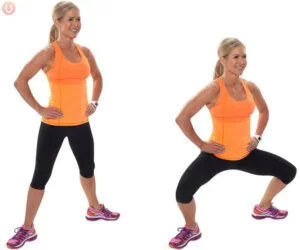
Clam Exercise:
The patient’s position is lying on the affected side and the bottom of the arm is extended upward to support the head and neck.
Then flex the hip and knee joint so that the thighs are positioned at a 90-degree angle to the torso and the knees are also flexed at roughly 90 degrees.
Make sure the shoulder joint, hip joint, and knee joint are stacked, the body is perpendicular to the ground.
Keep the big toes touching, tighten the core muscle, and externally rotate the hip joint so the knee joint is open, as though the clam is opening up, and then rotate as far as comfortably with good form, then reverse the movement of the exercise means, internally rotate the hip joint return into the starting position.
Do this exercise in 10 repetitions before repeating on the other side.
For the resistance used a small looped resistance band in the exercise.
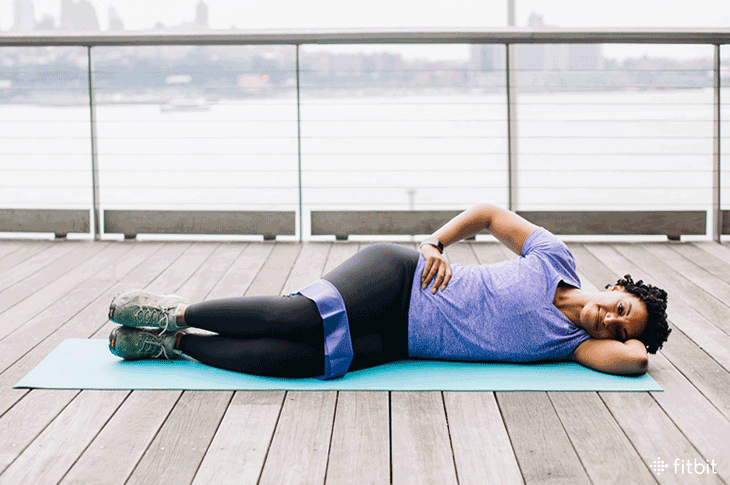
Step-ups:
The patient’s starting position for the test is the standing position.
Put one foot onto a platform, or step bench, or to the lowest step of the staircase.
The patient must be kept straight onto the pelvis level, bend to the knee joint, and slowly lowered to the opposite foot onto the ground.
Lightly touch the toe onto the ground, and then rise to back up to start the position.
Repeat this step-up exercise 10 times in 1 session and 3 sessions every day.
This step-up exercise targets almost all the muscles of the lower body but especially the sartorius muscle.

Foam Rolling:
The patient’s position supports the weight on the elbows and knee joints.
Put the foam roller under the belly and in between the thighs with the edge of the roller in connection with the inner hip.
Then using the elbow joint and straight leg, move the body slowly so that the foam roller is moved along the inner thigh.
This is very tender but with each foam pass, roller pressure is increased in the muscle.
It is released to muscle spasms and swelling in the muscle which is applied like a massage.
Repeat this foam rolling exercise 3 times every day.
Lateral band walks:
For this exercise, The patient used one prop-looped resistance band.
The patient’s position is to place the band around the legs, above the ankle joint.
Then flex both legs slightly and move the right leg laterally.
Pull the band against the resistance and move the left leg closer, then take at least 10 to 12 steps toward the right direction in the same way.
Repeat this exercise with the opposite side.

Yoga pose for Sartorius’s pain
- Reclining Hero Pose (Supta Virasana)
- Half-Reclining Hero Pose (Ardha Supta Virasana)
- Bow Pose (Dhanurasana)
- Camel Pose (Ustrasana)
- Firefly Pose (Tittibhasana)
- High Lunge
- Low Lunge (Anjaneyasana)
- One-Legged King Pigeon Pose
- Tree pose
Reclining Hero Pose:
The patient’s starting position is to perform Virasana means exhale and lower the back torso toward the ground.
Then the patient is lean onto the hands, then the forearms and elbow joint.
Once the hand is on the elbow joint, put the hands on the back of the pelvis and release the lower back and upper buttocks by spreading the flesh down toward the tailbone.
After then sink the heads of the thighbones deep into the back of the hip joint sockets, it is alright to lift the knee joint a little away from the ground to help soften the groins.
The patient is also lifting the knee joint a few inches with a help of a thickly folded blanket.
In to start position, stay in this pose for 15 to 30 seconds to 1 minute.
Then gradually extend the time and try to stay in the yoga pose for 5 minutes.
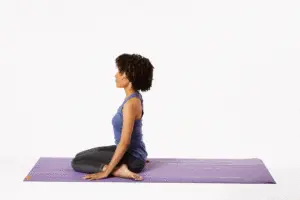
Half Reclining Hero Pose :
The patient’s position is in a kneeling position towards the front of the mat.
Bring the right foot flat to the mat and drop down inside the left foot, then walk the right foot out to the right as far as the patient requires.
After then check the left foot and toes point straight back and that the right knee points straight ahead.
Put the hands behind, palms down and fingertips facing forwards, and bend back till the feel the stretch in the left quad.
The patient is come down onto the elbows or lowers the down to the mat, gets the arms up overhead, and holds onto the other elbow joint.
To increase the intensity, the patient hugs the right knee into the chest, and the patient maintains this pose for 3 to 5 slow breaths.
Then release the arms and bring the hands to the mat and carefully press the back up for the other side.
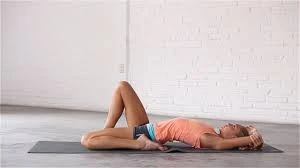
Bow pose :
The patient’s position is lying on the belly on the mat, with a blanket under the pelvis.
Then press all of the toes into the ground and then flex the knee joint, must keep the toes active, then grab the outer edges of the ankles with the hands and flex the feet strongly.
During the inhalation, lift the rib cage and shoulders toward the ears.
During the exhalation, lengthen the tailbone and kick the legs back into the hands as they hold on firmly.
Then lift the head, and press down through the thighs to lift the chest.
The patient is to stay in the pose for 15 to 30 seconds.
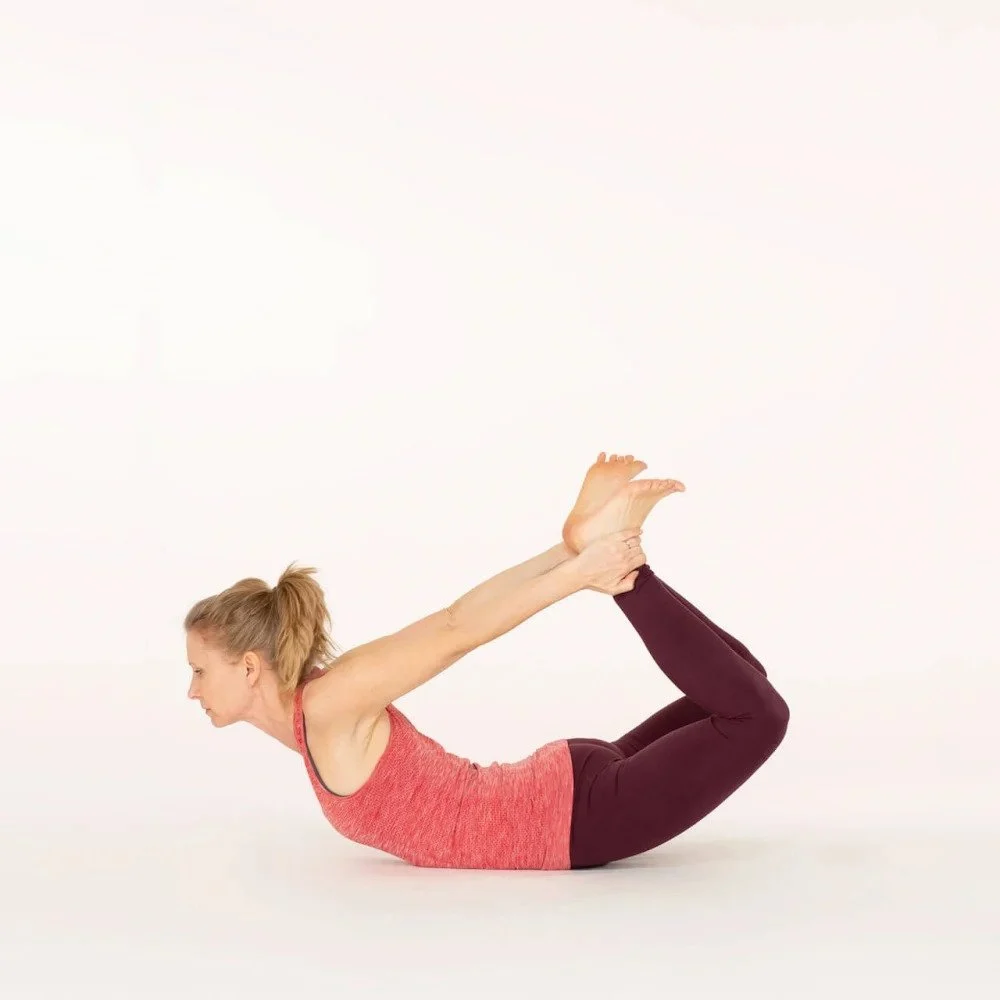
Camel Pose :
The patient’s position is in a kneeling position on the mat with both knees shoulder-width apart.
Then reach to the back and place the hands on the bottoms of the feet.
The patient becomes an arch into a backbend so that the head is fall back and gazes at the wall behind the body.
Maintain this yoga pose for 15 to 30 seconds and repeat for many times.

Firefly Pose :
The patient’s position is with a standing forward bend, with the toes pointing out toes and knees slightly flexed.
Then take the right hand through the legs to clasp the right calf, put the right shoulder behind the right knee and place the right hand on the ground behind the heel with fingers facing forward.
Repeat this pose on the other side.
Tilt the chest forward and carefully lower the legs onto the backs of the upper arms.
Inhale, lift the feet off the mat and straighten the legs.
The patient’s feet are pointed or flexed.
Maintain this yoga pose for 15 to 20 seconds and for a longer time, then release the feet to the ground with an exhale.
High Lunge :
The patient’s starting position is with this yoga pose Adho Mukha Svanasana ( Downward-Facing Dog ).
Exhale and step the right foot forward between the hands and align the knee joint over the heel.
Keep the left leg firm.
The patient is inhale and raises the torso upright.
At the same time, sweep the arms wide to the sides and raise them overhead, palms facing
Must Be careful not to overarch the lower back.
Lengthen the tailbone toward the ground and reach back through the left heel.
Be sure not to press the front ribs forward and draw them down and into the torso.
Then raise the arms from the lower back ribs, reaching through the little fingers.
Maintain this pose for 15 to 30 seconds to 1 minute every day.
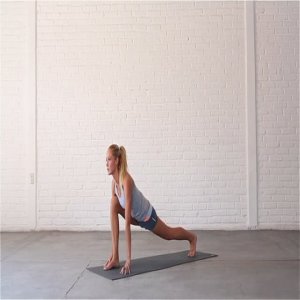
Low Lunge :
The patient’s starting position is with the downward-facing dog then exhale and step the right foot forward between the hands, aligning the right knee joint over the heel.
After then lower the left knee to the ground and keep the right knee fixed in place, and slide the left back till they feel a comfortable stretch in the left front thigh and groin region.
Turn the top of the left foot to the ground, Inhale and lift the torso upright.
Sweep the arms out to the sides and up, perpendicular to the ground.
Then draw the tailbone down toward the ground and lift the pubic bone toward the navel.
Lift the chest from the firmness of the shoulder blades against the back torso, and then take the head back and look up, being too careful not to jam the back of the neck.
Maintain for a minute, exhale the torso back to the right thigh and hands to the ground, and turn to back toes under

One-Legged King Pigeon Pose :
The patient’s starting position is on the hands and knees, sliding the left knee forward, angling the left shin under the torso so that the left foot is at the front of the right knee and the outside of the left shin is resting on the ground.
Then slowly slide the right leg back, straightening the knee and resting the top of the thigh on the ground, and lower the outer left backside to the floor.
Position the left heel just in front of the right hip joint, and the left knee is an angle slightly to the left, outside the line of the hip joint.
Look back at the right leg and it extends the straight back from the hip joint.
Lift the torso away from the thigh, and lengthen the lower back by pressing the tailbone down and forward.
And then draw the right front hip point slightly forward, toward the left heel.
Stay in the pose for a few breaths, then release the hands one by one and lower the torso over the left leg and down to the ground.
The patient is kept for a few breaths and repeats with the opposite side.
Tree pose :
This yoga pose is also known as the Vrksasana.
The patient’s position is standing in the Tadasana position means spreading the toes, pressing the feet into the mat, and firming the leg muscles.
Then lift the front hip points toward the lower ribs which are gently lifted in the lower belly.
The patient inhales deeply, lifts the chest, and exhales as they draw the shoulder blades down the back.
The patient is looking straight ahead, places the hands on the hip joint, and raises the right foot high onto the left thigh or shin.
Avoid making contact with the knee joint, and press the right foot and left leg with each other.
Maintain this yoga pose for several breaths, then step back into the mountain pose and repeat this yoga pose on the opposite side.

Prevention of Sartorius muscle pain
- Avoid painful movements and applied gentle stretch till regain the full ROM ( range of motion ) and normal strength in the injured leg and when they walk without pain and limping.
- To avoid sartorius muscle pain, the patient is doing the warm-up and cool down during the exercise.
- Always use good body mechanics and do the right strength training and stretching exercises for the inner thigh which is an important part of the treatment plan.
FAQ
What does sartorius pain feel like?
This inflammation may be experienced as pain or hypersensitivity on the interior side of the knee. Other symptoms of sartorius-related muscle pain can contain a burning or stinging sensation at the front of the hip. An overt trauma, such as an athletic injury may carry on this pain.
How do relieve sartorius muscle pain?
Common therapies include a combination of anti-inflammatory medication to relieve pain and swelling, stretching exercises, icing the site affected, rest, and rehabilitation exercises.
Why does the sartorius muscle hurt?
The Sartorius is the longest muscle in the body and is situated in the anterior compartment of the thigh. If it carries trigger points, it can trigger pain in the thigh as well as in the knee. With a self-massage, you can free yourself from these tensions & trigger points and thus usually reduce the pain.
How long does it take for a sartorius muscle to recover?
sartorius can successfully undertake both concentric and eccentric workloads. Rehabilitation should last from 20 to 30 days depending on the level and gravity of the strain.
How do you know if your sartorius is tight?
Lie on a flat surface. Extend the other with the but on the edge & the leg hanging over the edge. If the leg hanging out is turned outward but not away from the centreline (external rotation without hip abduction), then you might have tight sartorius muscles.
Can the sartorius muscle cause hip pain?
Sartorius trigger points can refer to pain along the muscle from the front of the hip and thigh down through the medial thigh and to the medial knee. They can also generate leg cramps, problems climbing stairs, and numbness and tingling in the outer thigh, known as meralgia paresthetica.

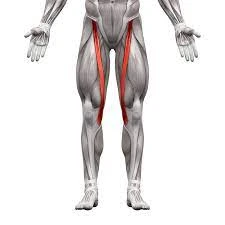
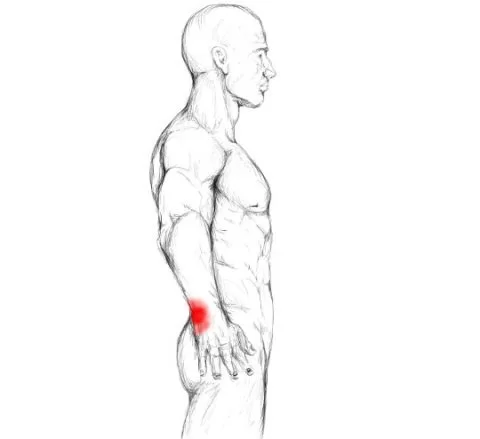

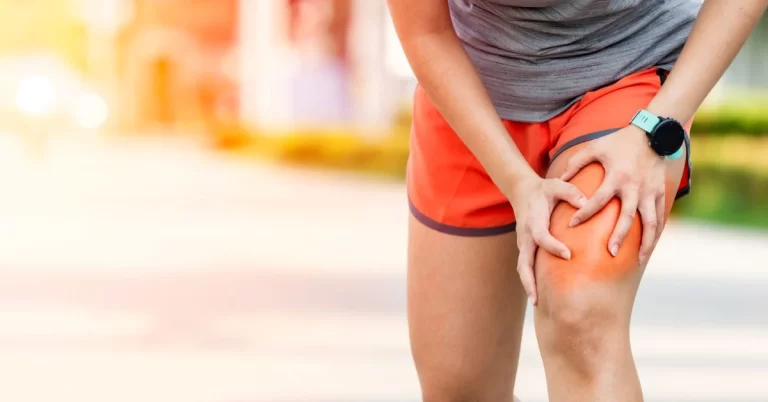
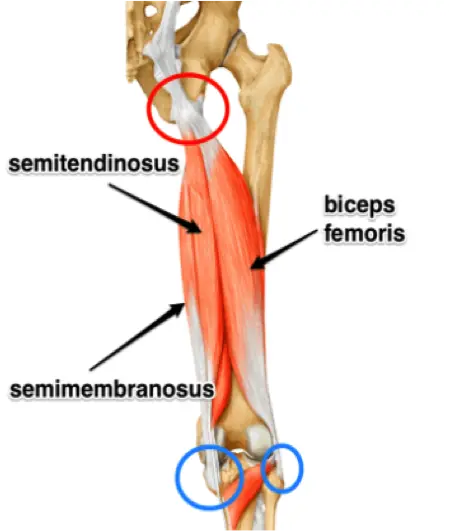
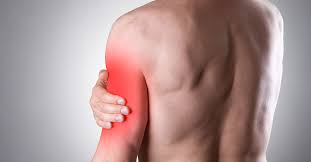

One Comment